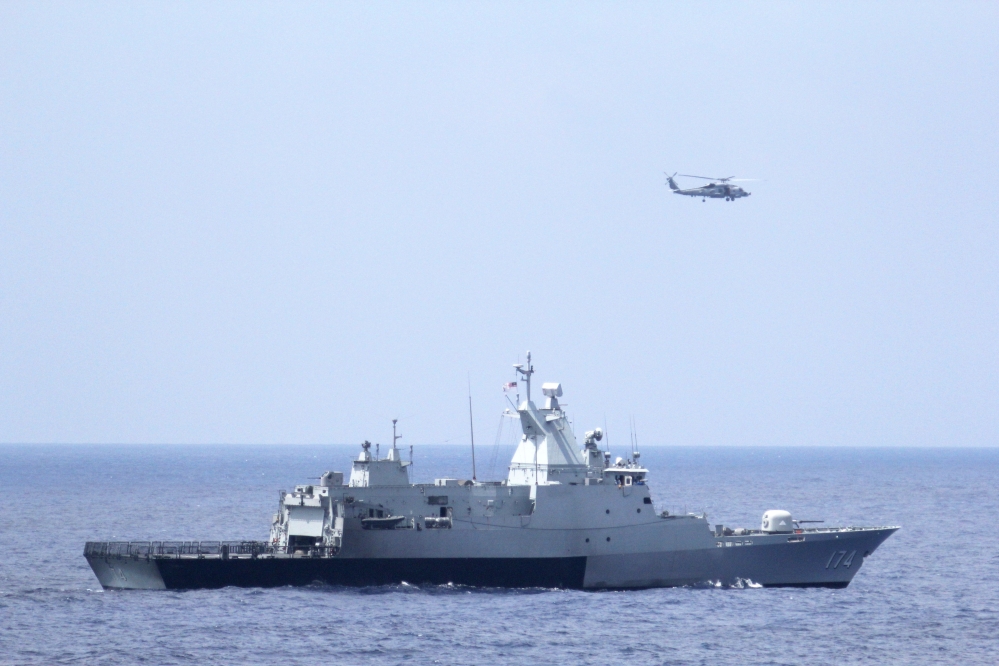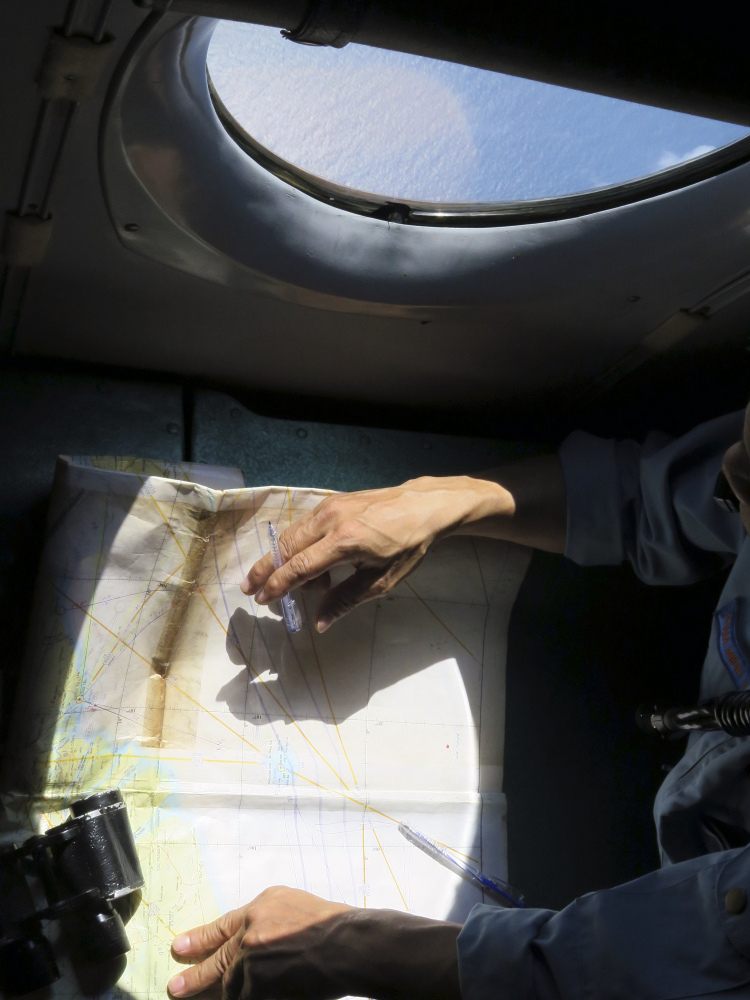KUALA LUMPUR, Malaysia — The search for a missing Malaysian jetliner with 239 people onboard could expand westward into the Indian Ocean based on information that the plane may have flown for four hours after it dropped from radar, U.S. officials said Thursday.
A senior American official said the information came from a data stream sent by Malaysia Airlines Flight 370. If the two engines on the Boeing 777 functioned for up to four additional hours, that could strengthen concern that a rogue pilot or hijacker took control of the plane early Saturday over the Gulf of Thailand.
All other communication with the plane ended after 1 a.m. At that point, the pilot signed off with Malaysian air traffic controllers with a casual “All right, good night,” according to news reports. Within 30 minutes the transponder signal the plane was sending to ground-based radar stations went dark.
If the plane flew on for hours, it’s likely that someone in the cockpit manually turned off the transponder and the radio.
“The fact that a modern airplane with a huge amount of redundancy appeared to change course at the same time that the transponder was turned off, that suggests that someone unauthorized took control of that airplane, like an intruder or one of the pilots,” said a U.S. flight crash expert who spoke on condition of anonymity.
DIRECTION UNCLEAR
Other U.S. officials said their information did not reveal in what direction the plane flew – or whether it simply circled – during that time. Four hours of additional flight could have put the plane somewhere over the Indian Ocean, far from its Beijing destination, prompting officials to consider whether the search area should be expanded.
Modern airplanes send some information in a steady stream to their owners, the company that built them or the firm that built their engines. In the final minutes before Air France Flight 477 plunged into the Atlantic almost five years ago, it sent 29 automatic error messages to the airline’s home base in France.
The Wall Street Journal first reported that U.S. investigators suspect that the engines on the Malaysia Airlines flight kept running for up to four more hours after the plane reached its last known location. The paper later corrected its report to say that this belief was based on satellite data that was designed to report on the status of some onboard systems, not signals from monitoring systems embedded in the plane’s Rolls-Royce engines. The Malaysian government denied the initial report.
In Washington, one senior administration official said the data about the plane engines came from the Aircraft Communications Addressing and Reporting System, or ACARS, a way that planes maintain contact with ground stations through radio or satellite signals. The official said Malaysian authorities shared the flight data with the administration.
Malaysian authorities had earlier said that engine data was unavailable after the plane disappeared from civilian radar at 1:30 a.m. Saturday. The last transmission from the engines came 26 minutes after takeoff from Kuala Lumpur, Malaysia Airlines chief executive Ahmad Jauhari Yahya said.
SEARCH CHAOTIC
“The last transmission was received at 1:07,” Ahmad told reporters. “It said everything is operating normally.”
Representatives from both Boeing and Rolls-Royce have been in Kuala Lumpur working with the airline, and neither received data after 1:07 a.m., Ahmad said.
The search for Flight 370 has appeared chaotic and baffling – a mix of rumors, confusion and red herrings. The government in Kuala Lumpur acknowledged Thursday that it has made little progress in solving the mystery of the vanished plane.
“We have looked at every lead. In many cases, in fact all the cases, we have not found anything positive.” said Hishammuddin Hussein, Malaysia’s defense minister and acting transport minister.
“This just might be something we have never seen before,” Steven Wallace, former director of the Federal Aviation Administration’s office of accident investigation, said Thursday.
Wallace said progress may be hampered because Malaysia lacks an investigative branch like the U.S. National Transportation Safety Board.
“The pattern here is that the best information is not being immediately presented to the smartest people around who could look at it,” Wallace said. He noted that Malaysian authorities only revealed after several days that their military radar had picked up signs of a mysterious plane flying off Malaysia’s western coast after the passenger jet disappeared much farther east.
Then, China disclosed three days after the fact that its satellites had picked up images of what appeared to be debris in the area where the plane might have vanished. No signs of the wreckage were ultimately found there.
“And then we have this new business about the engines sending (signals) automatically, also several days old,” Wallace said.
“Between Rolls Royce and Malaysia Air, they know whether they have that technology in place, yet we get conflicting reports,” he said.
Send questions/comments to the editors.






Success. Please wait for the page to reload. If the page does not reload within 5 seconds, please refresh the page.
Enter your email and password to access comments.
Hi, to comment on stories you must . This profile is in addition to your subscription and website login.
Already have a commenting profile? .
Invalid username/password.
Please check your email to confirm and complete your registration.
Only subscribers are eligible to post comments. Please subscribe or login first for digital access. Here’s why.
Use the form below to reset your password. When you've submitted your account email, we will send an email with a reset code.